The concept of unity, at the center of the Muslim revelation, is the conceptual foundation for Islamic arts and sciences. The Alhambra in Granada and the mosque de Paris in Paris carry plastic methods to anticipate the divine unity manifesting in diversity. Just as all of the sciences that can properly be called Islamic reveal the unity of nature, so too do all forms of Islamic art that aren’t trying to be too pretentious about it.
One could say that the purpose of all of the Islamic sciences and the ancient and medieval cosmological sciences is to demonstrate the unity and interconnectedness of everything that exists. This is done in the hopes that, by planning the unity of the cosmos, human beings will be led to the unity of the divine principle, which is the image of the agreement of nature.
To the people of Arabia, in the seventh century a.d. came the prophet Muhammad (S.A.W.W), also known as Muhammad, the servant. After his death, within a decade, Muslims unified the whole Arabian peninsula under their rule.
In less than one hundred years, Islam had made its way from Al-Hamra in Spain to the frontiers of china. Science, religion, and philosophy were all brought under the umbrella of Islam.
In the holy Quran, Allah s.w.t. instructs Muslims to study, seek knowledge, and learn and profit from the experiences of others. In the Sunnah, the prophet Muhammad (s.a.w.) teaches Muslims to learn and gain from the experiences of others.
This motivated Muslims to achieve greatness in various fields, including science, medicine, mathematics, astronomy, chemistry, philosophy, art, and architecture. The period between the 17th and 13th centuries was known as the Islamic golden age of learning.
In the field of mathematics, they were responsible for the development the invention of the existing arithmetical decimal system as well as the basic operations associated with it, including addition, subtraction, multiplication, division, exponentiation, and root extraction.
The time between the seventh and thirteenth centuries was known as the Islamic golden age of learning. In the field of mathematics, they were responsible for developing the contemporary arithmetic decimal system and the basic operations associated with it.
These operations include addition, subtraction, multiplication, division, exponentiation, and finding the root. They also presented the notion of “zero” to the rest of the world. [1]
Al Khwarizmi
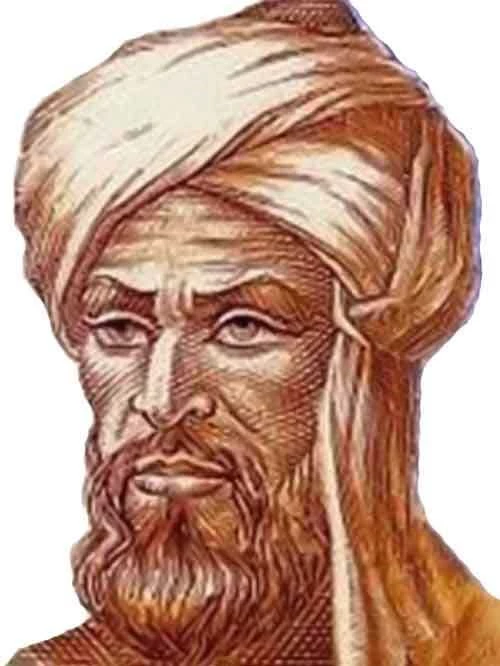
In addition to being a mathematician and an astronomer, Muhammad ibn Musa Al-Khwarizmi is known as the “founder of algebra.” it is widely accepted that Al-Khwarizmi was born in the town of Kath, which is located in the oasis of Khorzen, in the year 780 CE. Al-Khwarizmi was named court astronomer by Al-Mamun after the latter called him to come to Baghdad. His work was titled Hisab Al-Jabr Wal Mugabalah, which translates to, from whence the word algebra (Al-Jabr) originated.
It was in the year 1857 CE that a Latin translation of a Muslim arithmetic tract was found in the library of the University of Cambridge. The text, which begins with the words “spoken hath algorithmic,” is titled “algorithmic de numero indecorum” (algorithm of the indo-roman numbers).
It is thought that this is a copy of a mathematical work written by Al-Khwarizmi that was first reported in Arabic and afterward translated into Latin by an English scholar in the twelfth century.
In the history of mathematics, Al-Khwarizmi is remembered mainly for developing the algorism theorem (the old name for arithmetic).

Al-Khwarizmi emphasized that he created his algebra book to serve the practical requirements of the people on problems of inheritance, legacies, partition, lawsuits, and trade. Al-Khwarizmi highlighted that he wrote his algebra book to help the practical needs of the people.
Gerard of Cremona and Roberts of Chester, both living in the twelfth century, are credited for translating the algebra of Al-Khwarizmi into Latin. It was a standard tool for mathematicians all around the globe up to the sixteenth century.
Ghiyath Al-Din Al-Kashani
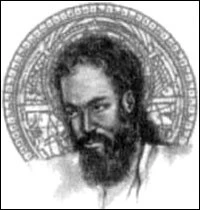
Ghiyath al-din al-Kashani was yet another brilliant mathematician who lived in the latter part of the fourteenth century. He based his work on the theory of numbers and several computational methods. In 1424, he determined a number for 2pi that was accurate to sixteen decimal digits by approximating the circle with 805306368 side polygons.
One of his most influential publications was titled “miftah-ul-hissab,” which translates to “the calculators’ key.” in this book, he outlined a procedure for determining the fifth root of any given integer. Up to the seventeenth century, students at Persian schools were instructed to read this text.
Later in his life, in response to an invitation from the monarch, he moved to Samarkand to contribute directly to establishing a new scientific school and observatory and to collaborate on research with other intellectuals of the day. Kashani also wrote about estimating sin by precisely solving a cubic equation. This was another one of his contributions.
Al Kindi
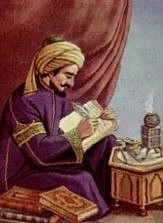
Around 801 CE, abu Yusuf Yaqub ibn Ishaq Al-Kindi was born in Kufa when his father served as the city governor.
The surname indicates descent from the royal kind of tribe, which has its roots in Yemenite culture. He was the first person in Islamic history to be given the title of falsum al-arab, which translates to “the philosopher of the Arabs.”
Al Karaji
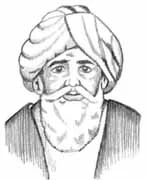
Abu Bakr, ibn Hussein, was born in the city of Khaki, in Baghdad. His writings included the mathematical disciplines of algebra, geometry, and arithmetic. The laws of calculation are discussed in his work “Al-Kafi fi Al-Hisab,” which translates to “essentials of arithmetic.” His second work, titled “Al-Fakhri,” came from Al-Karaji’s close friend, the grand vizier of Baghdad.
Abu Wafa Muhammad Al-Buzanji

Abu Wafa Muhammad Al-Buzanji was born in Buzjan, Nishapur, around 940 a. D. He attained greatness as a mathematician and astronomer in Baghdad, where he passed away in the year 997 a.d. the most important contributions that Al-Buzanji made to mathematics were in a few different subfields, most notably geometry, and trigonometry.
In geometry, he contributed to the solution of geometrical problems with the opening of the compass, the creation of a square equivalent to other squares, regular polyhedral, the construction of a regular hexagon taking for its side the equilateral triangle inscribed in the same circle, structures of the parabola by points, and geometrical solutions of the equations x4 = a and x4+ax3 = b.
The contribution of Al-Buzanji to the development of trigonometry was likewise significant and extensive. He was the first to say that the sine theorem may be generalized to spherical triangles. He devised an innovative method of compiling sine tables, with the value of sin 30 being accurate to the eighth decimal point in his new system. In addition to that, he thought of sidetracks and designed tables for them.
He made the first official announcement of the secant and the cosecant. He wrote many books on mathematics and other disciplines, most of which have been destroyed or survived in modified versions. He also wrote books on a diverse of different topics.
In addition, he was the author of several insightful remarks on Euclid and Al-Khwarizmi. Significant portions of contemporary trigonometry can be traced back to him.
Al Battani
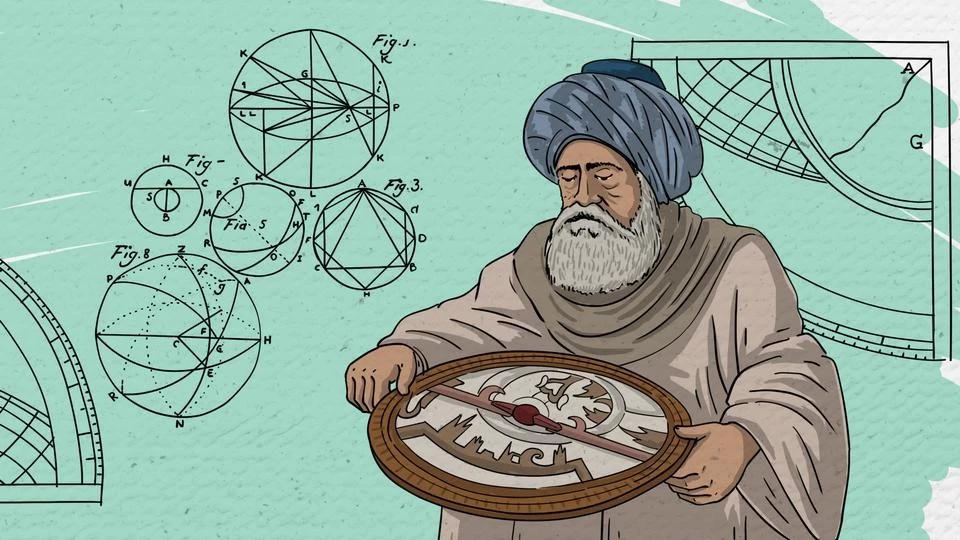
Muhammad Ibn Jabir Ibn Snan Abu Abdullah invented trigonometry. Has born in battle in Mesopotamia and passed away in Damascus, Syria, in 929 CE.
It is generally agreed that he was the most talented Muslim mathematician and astronomer who ever lived. He was also the ruler of Syria. Al-Battani was an innovator in trigonometry and is credited for computing the first table of cotangents.
Al Biruni

Al-Biruni was one of the individuals who contributed to the development of modern trigonometry. He was also an astronomer, physicist, geographer, and mathematician, in addition to being a philosopher. Al-Biruni was the first to propose that the world rotates on its axis. He did it 600 years before galileo.
Al-Biruni devised an innovative method for calculating the circumference of the world using geodesic measurements that he carried out. Through mathematics, he made it possible for anyone to calculate the direction of the qibla from any location on the planet.
In trigonometry, Muslim academics in the tenth century created the theory of sine, cosine, and tangent functions. These three functions are used to calculate angles. Muslim intellectuals contributed significantly to the development of trigonometry in both its flat and spherical forms.
Ptolemy’s theorem serves as the foundation for Muslims’ trigonometry. Still, the Muslim approach is better in two significant ways: it uses the sine, Ptolemy relies on the chord, and it is expressed in algebra rather than geometric form.
